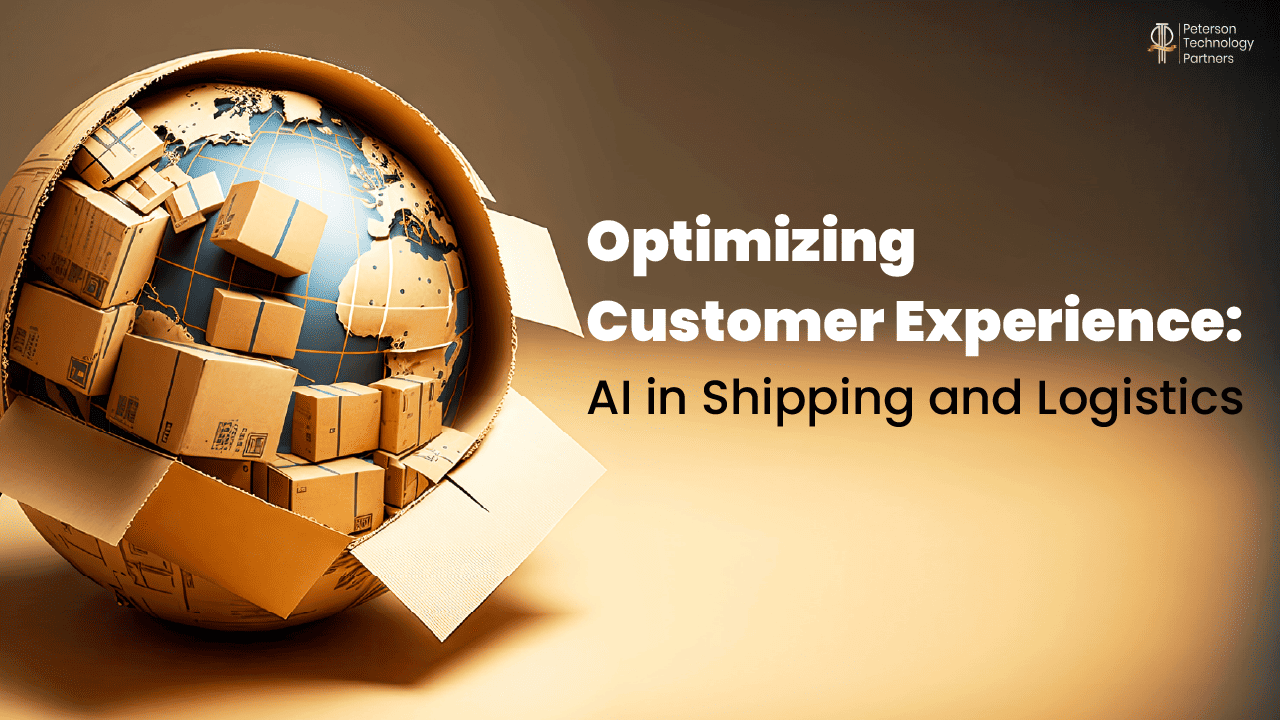With many industries facing difficult decisions surrounding where and how to implement artificial intelligence to increase revenue, it is helpful to consider how these advancements may positively affect the customer experience in particular. McKinsey anticipates many organizations will become automated by 2030 with the help of AI — specifically due to its ability to complete repetitive tasks, such as warehousing, monitoring packages, and making deliveries. Meanwhile, it is projected that by 2035 AI will have increased productivity in logistics by over 40 percent. Despite the 50+ technological opportunities for automation in the shipping and logistics industry, the rise in usage is slow due to the hesitancy of business leaders, who are wary of investing in these new technologies, especially due to the general ambivalence surrounding AI.
This article aims to unpack how AI can improve the customer experience in shipping and logistics by increasing efficiency, automating quality control, and improving customer service.
Efficiency
Efficiency is one of the most important elements of a successful shipping and logistics industry and one of AI’s greatest advantages. As people demand delivery of e-commerce purchases in shorter timespans, there are rising use-cases of AI and data helping deliver efficiency.
AI technology can automatically optimize deliveries, determining the most time and fuel-efficient routes while adapting to potential transit delays in real-time by taking into account traffic delays, weather forecasts, and cargo volumes.
At PTP, for example, we have already started implementing automation-driven solutions and using the data collected to optimize delivery routes, personnel management, and enable opportunity tracking, for our clients (read more about our project development services here). In instances like this hyperlocal logistics are strategized using real-time analytics, which can track customer orders and build inventories.
In the near future the possibilities of autonomous vehicles — such as self-driving cars, delivery drones, and automatic rail transportation systems — could be leveraged to determine the most efficient delivery routes, shortening shipping times and cutting delivery costs. Unlike delivery drivers, autonomous vehicles can work 24/7, saving companies significant costs.
Quality Control
AI can be used to ensure cargo is being shipped to consumers with zero damage, minimizing customer dissatisfaction and the costs of replacing damaged packages.
Computer-vision AI is a new tool that can automatically detect and classify any damage to a product and determine the appropriate corrective action. This time and cost-saving tool learns how to detect and categorize defects using information extracted from images and videos and continues to learn as it operates. Computer-vision AI can be used in production lines and warehouses — reducing the need for monotonous (and sometimes dangerous) inspection processes from employees. It can also be especially useful in ensuring a package has the right number of items, a task that is time-consuming and error-prone when performed by human employees.
In addition to recognizing product damage, AI can monitor and predict the conditions of delivery vehicles. Specifically, predictive AI can help companies determine when vehicles are due for repairs, mitigating risks for shipping delays due to transportation issues along with safety risks for delivery drivers.
Customer Service
No matter how smooth and efficient the delivery process is, customer service will always be necessary. Logistics companies that adopt AI will be able to understand their customers better and offer them more personalized services. AI can learn patterns from when an order is made to when it is delivered, which means it can also learn to detect when something goes wrong even before the customer reaches out for assistance, thus optimizing the customer service experience and necessary corrective action.
Customer service chatbots can automatically assist customers with most actions — requesting a delivery, amending an order, tracking a shipment, and responding to FAQs. A chatbot’s ability to assist customers around the clock yields a more accessible customer service experience and cuts costs for companies that will need fewer customer service employees.
Further, the information the chatbot collects and analyzes enables businesses to understand their customers and continuously learn how to more efficiently solve problems and prevent them in the future. AI-powered customer service can use Natural Language Processing (NLP) to identify language patterns commonly used by customers that will help answer their questions more accurately and efficiently. Meanwhile, using Machine Learning (ML), AI-powered customer service tools can take these patterns and learn contexts to enable learning as terms evolve.
A Hesitant approach
Supply chain companies that are proactive in implementing AI have experienced an improvement of 15 percent in logistics costs, 35 percent in inventory levels, and 65 percent in service levels compared to those who are behind. As automation becomes the digital transformation tool of choice across industries, logistics, and transportation services will find themselves on the frontlines of this change. Though many companies today understand the need for automation tools and their benefits, implementation is still uneven. There is a need for a proactive approach towards AI, that is perhaps still missing within the industry.
Like with all AI implementation, there are concerns. Taking advantage of AI technology, though it is expected to reduce costs and increase revenue in the long run, requires a large investment in time, labor, and money. For organizations to capture the expected ROI, they must undergo major organizational changes, business process updates, and upskilling efforts.
There is also a growing demand for AI talent which is still not being met at the levels required. Companies need access to the right talent to strategize, execute automation, and grow their businesses. But that talent is still lacking, despite the market being ready for them. Companies need to begin planning their talent acquisition strategies, or working with the right talent acquisition partners if they want to beat the rush for AI talent.
As more data and experience are accumulated, and talent is brought on board to execute strategy, companies will have a more straightforward pathway toward adopting AI in a way that improves efficiency, quality control, and customer service in all industries.





